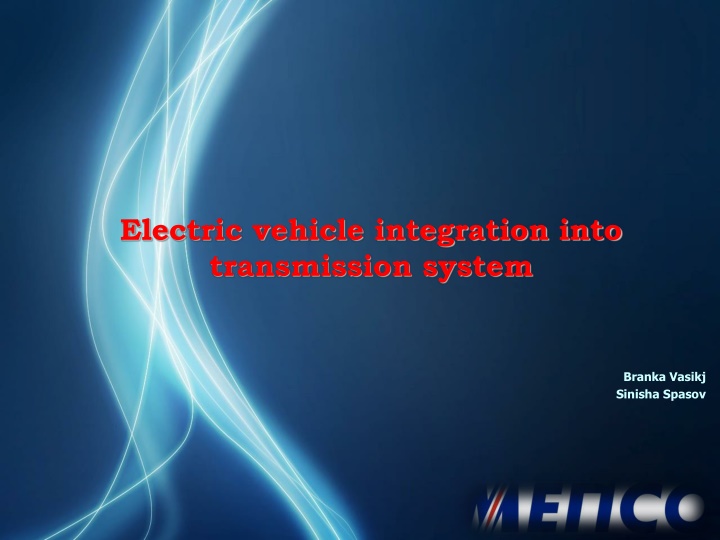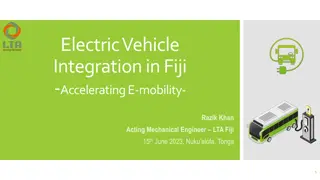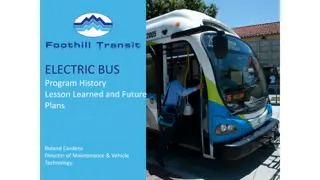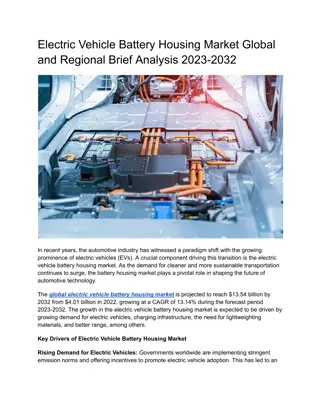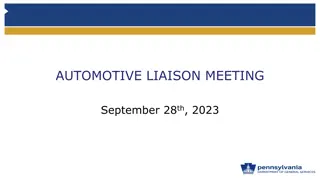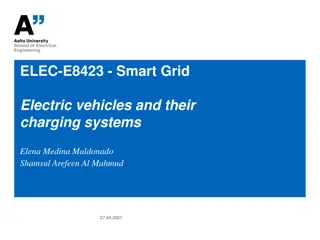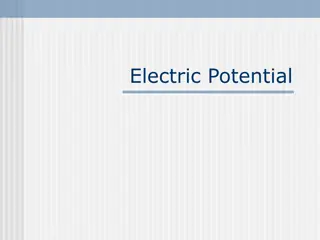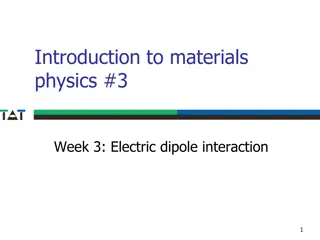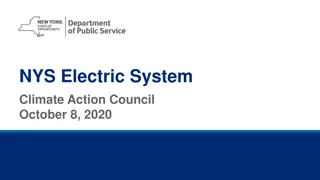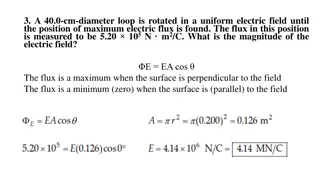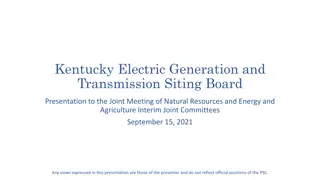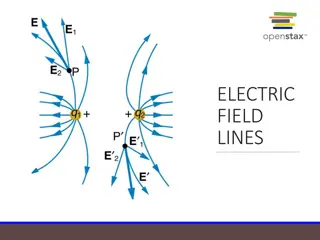Electric vehicle integration into transmission system
This article focuses on the integration of electric vehicles into the transmission system, authored by Branka Vasikj and Sinisha Spasov. It explores the intricate relationship between electric vehicles and transmission systems, highlighting key considerations and challenges in this integration process. The content delves into the technical aspects and implications of incorporating electric vehicles within existing transmission infrastructure, offering insights for industry professionals and enthusiasts alike.
Download Presentation

Please find below an Image/Link to download the presentation.
The content on the website is provided AS IS for your information and personal use only. It may not be sold, licensed, or shared on other websites without obtaining consent from the author.If you encounter any issues during the download, it is possible that the publisher has removed the file from their server.
You are allowed to download the files provided on this website for personal or commercial use, subject to the condition that they are used lawfully. All files are the property of their respective owners.
The content on the website is provided AS IS for your information and personal use only. It may not be sold, licensed, or shared on other websites without obtaining consent from the author.
E N D
Presentation Transcript
Electric vehicle integration into transmission system Branka Vasikj Sinisha Spasov
Power system challenges The world s electricity systems face a number of challenges, including ageing infrastructure, continued growth in demand, integration of renewable energy sources and electric vehicles. A growing adoption of electrical mobility would coincide with other trends that put higher requirements on the network and power system, such as the increasing share of renewables and distributed generation, as well as demands for increasing energy efficiency. Together these trends will drive the transition from traditional to smarter grids. 2
Impact of the electric vehicles on the transmission network In low load (night) EVs have beneficial influence because they use the excess energy from thermal power plants Optimal charging reduces operating costs for power system management: Improved ability of the system to absorb energy from RES Lower usage of expensive power during the peak demand Opportunity for EVs to provide ancillary services Reduced gas emissions and related costs 3
Electric vehicles as consumers and suppliers of electricity Two-way flow of energy Increased grid capacity Improved reliability of the system Facilitating power system management On long term scale, EVs future role in the grid would be load-shifting and supplying power (Vehicle to Grid (V2G)) 4
State of Charge The electric vehicles relocate depending on the battery capacity (State of Charge - SoC). Varies in the range of 0 when the battery is fully discharged to 1 when the battery is fully charged, a 0-100%. When SoC is below 60% - storing energy When SoC is from 60% - 85% - storing and giving energy When SoC is above 80-85% - giving energy 5
Grouping of electric vehicles Grouped EVs behave like a large generator or a storage device. An aggregator will group the electric vehicles so that they will have some benefit on the power grid. The group is both a supplier and controlled consumer. The group could conduct frequency control 6
Diagram of electricity consumption for a typical winter day in Macedonia Battery capacity around 25 kWh At the same time 33.000 EV can be plugged in the grid 7
EVs as a part of the smart grid solution (1) Price arbitrage Taking advantage of electricity price differences in time Electricity is traded on a per minute basis at energy exchanges Risk due to battery aging and customer acceptance 8
EVs as a part of the smart grid solution (2) Control reserve In case of unplanned grid fluctuations, positive or negative control reserve must be activated to stabilize the grid Triggered charging or vehicle-to-grid upload can be used as such control reserve High prices are paid for provisioning of such systems 9
Electric vehicles in future Fast charging stations will consume more energy at the same time. To achieve SoC of 80% for 30 minutes, the EV will have to consume 50kW which is double the amount of todays gas stations. 10
www.mepso.com.mk Thank you! ! 11
